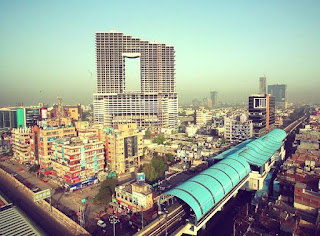The new India of
the 21st century as envisaged by the people, Governments and businessmen is a digital India. Globally there has been a
tacit understanding and a justified agreement amongst policymakers across the
globe that improved governance and policy practices can only be achieved
through providing value offering and interconnecting units through big data by
digitizing the infrastructure of services delivery across the governance
pyramids. This idea of value adding the services through digitizing and
improving the consumer experience has in particular drew attention of the
services industry where consumer tangibility is high and streamlining can be
done by effectively providing value added services to the consumers. Thereby
such changes have also been adopted by the real estate industry globally and
more recently in India.
As per investopedia value offering or value
proposition is a business of marketing statement that a company uses to
summarize why a consumer should buy a product or use a service. This statement
convinces the potential consumer that one particular product or service will
add more value or better solve a problem than other similar offerings. In a
layman term value offering is a selling or attraction point to draw towards
itself using tactics and strategies that belong to the marketing front. It
should be clear and short as to how it would solve a pain point or an
aberration while transacting the business. An ideal value offering is concise
and appeals to consumers strong decision making drivers.
Off recently this
value offering seems to be a possible game changer for the real estate industry
as it embarks upon enhancing consumer experience, forces to alter decision
logarithms of the consumer and thereby improving the selling points of the
product or commodity (real estate in this case) more radically. Recently
Viridian RED which is setting up World Trade Centre (WTC) in Gujarat
International Finance Tech-City (GIFT) is using this value proposition strategy
to attract global businesses to WTCs and thereby focusing more on customer
satisfaction rather than sale of real estate. This has provided Viridian RED an
upper edge amongst its contemporaries in the International Finance City of
Gujarat. On a much similar line, a particular value offering technique has been
narrowed down by real estate giant Emaar MGF, which tied up with PayUmoney to
provide consumers and its buyers the ease of paying installments digitally and
thereby circumventing the red taped procedure of Public Sector Banks in paying
such mortgaged recurring installments. This has advertently placed Emaar at a
level where it is perceived as more consumer friendly, approachable and relying
unit in the real estate industry.
Succumbing to the
demand of the consumers, more and more realtors have to embark upon providing
value offering services by providing them a value proposition which clears and
rectifies glitches created by a pain point in the eyes of a consumer. More
prospective models can be similar to Emaar MGF, providing online 3D tours of
the property using virtual reality as being used by Supertech for its Lavasa
property. Also one can outdo competitors by using the tool of digital marketing
and app developing so that real time tangibility with the prospective buyer can
be achieved. Hence this is probably not an overstatement to say that such value
offering services can be the real deal in the real estate which if embarked
upon judiciously can prove to be a shot in the arm for real estate sector
altogether.







